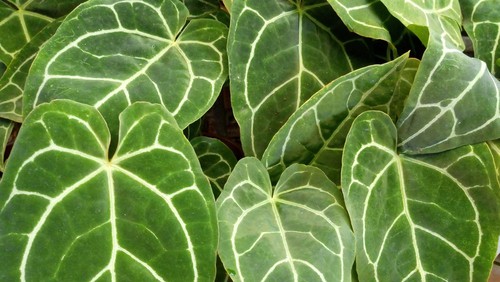Elephant ear plants are a popular choice for garden enthusiasts due to their large, showy leaves that resemble elephant ears. However, if you notice your elephant ear plant turning yellow and drooping, it could be a sign that something is wrong.
Understanding the reasons behind these symptoms is crucial to revive your plant and maintain its health.
Identifying the symptoms of a sick elephant ear plant is the first step towards reviving it. Yellowing and drooping leaves are the most common symptoms that indicate something is wrong. While some yellowing is normal as the plant ages, excessive yellowing can be a sign of stress or disease.
Drooping leaves can also be caused by various factors, including overwatering, underwatering, or lack of nutrients.
Several common causes can lead to yellowing and drooping elephant ear plants. These include watering issues, fertilizer application errors, lack of nutrition, temperature stress, drafts, low humidity, and insufficient light.
Disease and pest issues can also cause yellowing and drooping. Identifying the root cause is essential to revive your plant and prevent future problems.
Key Takeaways on Yellow and Drooping Elephant Ear Plant
- Identifying the symptoms of a sick elephant ear plant is crucial for reviving it.
- Several common causes can lead to yellowing and drooping, including watering issues, lack of nutrition, and pest issues.
- Preventive measures, such as proper watering and fertilization, can help maintain healthy elephant ear plants.
Check out these other related posts:
Understanding Elephant Ear Plants

Elephant Ear Plants, also known as Aro or Elephant Ears, are a popular indoor and outdoor plant. These plants are known for their large leaves that resemble elephant ears, hence the name. Elephant Ear Plants come in various sizes and colors, making them a great addition to any garden or home.
Elephant Ear Plants are native to tropical and subtropical regions, and they thrive in warm and humid environments. These plants require frequent watering and a well-draining soil to prevent root rot. Overwatering can cause the leaves to turn yellow and droop. On the other hand, underwatering can cause the leaves to wilt and turn brown.
One of the essential things to remember when caring for Elephant Ear Plants is to provide them with enough sunlight. These plants require at least six to eight hours of direct sunlight per day to grow correctly. Insufficient sunlight can cause the leaves to turn yellow and stunt the plant’s growth.
Another factor that can cause Elephant Ear Plants to turn yellow and droop is temperature stress. These plants prefer temperatures between 65 and 85 degrees Fahrenheit. Exposure to cold drafts or extreme heat can cause the leaves to wilt and turn yellow.
Identifying Symptoms
Yellowing Leaves
One of the most common symptoms of an elephant ear plant in distress is yellowing leaves. The leaves may turn entirely yellow or develop yellow spots. This could be caused by several factors, including improper sunlight, overwatering, or a lack of nutrients.
If the yellowing is due to sunlight issues, it’s important to ensure the plant is receiving the right amount of light. Elephant ear plants require bright, indirect sunlight to thrive. If the plant is not getting enough light, it may start to yellow. On the other hand, too much direct sunlight can also cause yellowing.
Overwatering is another common cause of yellowing leaves. If the soil is consistently wet or waterlogged, the roots may start to rot, leading to yellowing leaves. It’s important to ensure the soil is well-draining and to avoid overwatering the plant.
Finally, a lack of nutrients can also cause yellowing. Elephant ear plants require regular fertilization to thrive. If the plant is not getting enough nutrients, it may start to yellow.
Drooping Leaves
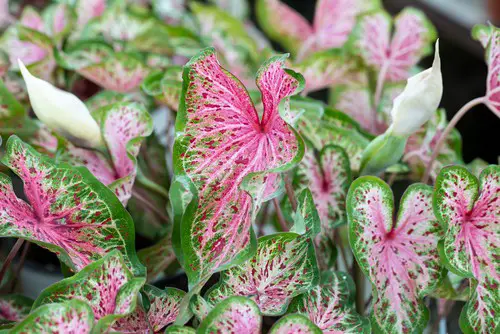
Another common symptom of an elephant ear plant in distress is drooping leaves. The leaves may start to wilt or droop, indicating a problem with water or nutrient uptake.
If the drooping is due to underwatering, the soil may be too dry. It’s important to ensure the soil is consistently moist but not waterlogged. On the other hand, overwatering can also cause drooping leaves. If the soil is consistently wet or waterlogged, the roots may start to rot, leading to drooping leaves.
Temperature stress and drafts can also cause drooping leaves. Elephant ear plants prefer warm, humid conditions and may start to droop if exposed to cold drafts or sudden temperature changes.
If the plant has recently been repotted, it’s normal for the leaves to droop for a few days. However, if the drooping persists, it may indicate a problem with water or nutrient uptake.
Elephant Ear Plant Turning Yellow And Drooping
Elephant ear plants are known for their large, vibrant leaves that can add a tropical feel to any garden or indoor space. However, if you notice your elephant ear plant turning yellow and drooping, it could be a sign of an underlying issue.
In this section, we will discuss some common causes for yellowing and drooping in elephant ear plants.
1. Watering Issues
One of the most common causes of yellowing and drooping in elephant ear plants is watering issues. Overwatering or underwatering can both lead to yellowing and drooping leaves. If the soil is too wet, the roots can become waterlogged and begin to rot, which can cause the leaves to turn yellow and droop.
On the other hand, if the soil is too dry, the plant may not be getting enough water, which can also cause the leaves to turn yellow and droop.
To avoid watering issues, it is important to establish a proper watering schedule for your elephant ear plant. They generally need to be watered once a week, but this can vary depending on the temperature and humidity levels. It is also important to make sure the soil has proper drainage to prevent waterlogging.
2. Temperature and Humidity Factors
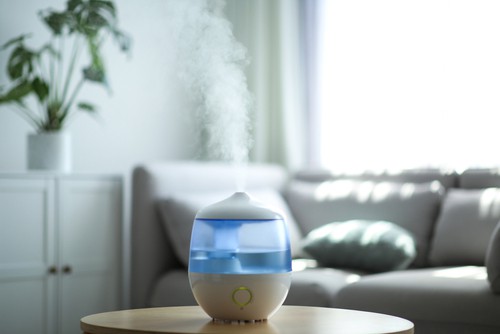
Elephant ear plants thrive in warm, humid environments. If the temperature drops too low or the humidity levels are too low, it can cause the leaves to turn yellow and droop. Low humidity levels can also cause the tips of the leaves to turn brown.
To avoid temperature and humidity issues, it is important to keep your elephant ear plant in a warm, humid environment. You can use a humidifier or mist the leaves with water to increase the humidity levels. It is also important to keep the plant away from drafts and cold temperatures.
3. Improper Sunlight
Elephant ear plants require bright, indirect sunlight to thrive. If they are not getting enough sunlight, it can cause the leaves to turn yellow and droop. However, if they are getting too much direct sunlight, it can also cause the leaves to turn yellow and brown.
To avoid improper sunlight issues, it is important to place your elephant ear plant in a location that receives bright, indirect sunlight. If the plant is getting too much direct sunlight, you can move it to a shadier location or use a sheer curtain to filter the light.
4. Soil and Nutrient Deficiencies
The soil and nutrient levels can also play a role in the health of your elephant ear plant. If the soil is too compact or lacking in nutrients, it can cause the leaves to turn yellow and droop.
To avoid soil and nutrient deficiencies, it is important to use a well-draining soil mix that is rich in nutrients. You can also fertilize your plant every few weeks with a balanced, water-soluble fertilizer to ensure it is getting the necessary nutrients.
Disease and Pest Issues
Elephant ear plants are susceptible to a range of diseases and pest infestations, which can cause the leaves to turn yellow and droop. Here are some common issues to look out for:
Root Rot
Root rot is a fungal disease that affects the roots of elephant ear plants. It is caused by overwatering or poor drainage, which leads to waterlogged soil. The fungus attacks the roots, causing them to rot and die. As a result, the plant is unable to absorb nutrients and water, and the leaves start to turn yellow and droop.
To prevent root rot, make sure the soil is well-draining and avoid overwatering. If you suspect your plant has root rot, remove it from the soil and trim away any affected roots. Repot the plant in fresh soil and reduce watering until it recovers.
Disease
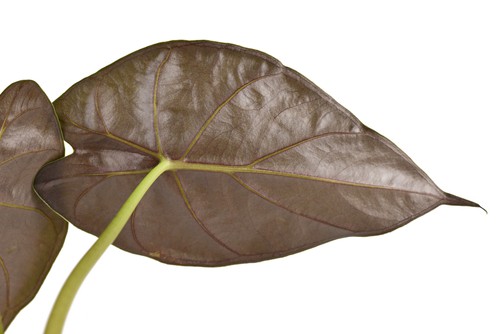
Elephant ear plants are also susceptible to a range of diseases, including bacterial and fungal infections. These can cause the leaves to turn yellow and droop, and may also produce spots, lesions, or other visible symptoms.
To prevent disease, make sure your plant is in a well-ventilated area and avoid overcrowding. Keep the leaves dry and remove any infected leaves as soon as possible to prevent the spread of disease. Fungicides and bactericides may also be used to treat infected plants.
Pest Infestation
Elephant ear plants are also vulnerable to pest infestations, such as spider mites, mealybugs, and scale insects. These pests can cause the leaves to turn yellow and droop, and may also produce visible signs of infestation, such as webbing or sticky residue.
To prevent pest infestations, keep your plant clean and free from debris. Check regularly for signs of infestation and treat any affected plants with insecticidal soap or neem oil. In severe cases, professional pest control may be necessary.
By being vigilant and taking proper care of your elephant ear plant, you can prevent and treat many common issues that cause the leaves to turn yellow and droop.
Reviving Your Elephant Ear Plant
If your elephant ear plant is turning yellow and drooping, it may be time to take action to revive it. The following sub-sections will provide some tips and tricks to help you get your plant back to its healthy state.
1. Correct Watering and Sunlight
One of the main reasons why elephant ear plants turn yellow and droop is an imbalance in the light to water ratio. Elephant ear plants need lots of water to grow, but they also require 6-8 hours of daily sunlight.
Without proper sunlight, most elephant ears won’t grow. On the other hand, overwatering can lead to root damage and a lack of oxygen to the plant roots, causing the plant to die.
To revive your elephant ear plant, make sure you are giving it the right amount of water and sunlight. Water the plant deeply once a week, allowing the soil to dry out slightly between waterings. Place the plant in a location with bright, indirect sunlight.
2. Nutrient Enhancement

Nutrient deficiency, particularly nitrogen and potassium, can also cause elephant ear plants to turn yellow and droop. To address this issue, you can apply a slow-release fertilizer or organic products to the soil.
Slow-release fertilizers will provide a steady supply of nutrients over time, while organic products will help improve soil health and provide a range of micronutrients.
Another option is to use epsom salt, which is rich in magnesium. Magnesium is essential for plant growth and can help improve the overall health of your elephant ear plant. Dissolve 1 tablespoon of epsom salt in a gallon of water and apply to the soil once a month.
3. Addressing Disease and Pests
If your elephant ear plant is turning yellow and drooping due to disease or pests, you will need to take appropriate measures to address the issue. Some common pests that can affect elephant ear plants include spider mites, mealybugs, and scale insects. To get rid of these pests, you can use insecticidal soap or neem oil.
Disease can also be a problem for elephant ear plants, particularly if they are exposed to wrong temperatures or improper sunlight. If your plant is infected with a disease, you may need to cut off the affected leaves and repot the plant in fresh soil. Be sure to sterilize any tools you use to prevent the spread of disease.
Reviving your elephant ear plant can take time, but with the right care and attention, you can get your plant back to its healthy state. Remember to provide the right amount of water and sunlight, enhance the soil with nutrients, and address any disease or pest issues that may be affecting your plant.
Preventive Measures for Healthy Elephant Ear Plants
Elephant ear plants are known for their large and beautiful leaves, which can add a tropical touch to any garden or indoor space. However, yellowing and drooping leaves can be a sign of an unhealthy plant. Here are some preventive measures to keep your elephant ear plants healthy.
1. Proper Watering
One of the most common causes of yellowing leaves in elephant ear plants is overwatering or underwatering. It is important to maintain a balance and keep the soil moist, but not waterlogged.
Water the plant thoroughly when the top inch of soil feels dry to the touch. Ensure that the pot has proper drainage to prevent water from accumulating in the bottom.
2. Ideal Temperature and Humidity
Elephant ear plants thrive in tropical climates with high humidity and warm temperatures. They prefer temperatures between 65-85°F (18-29°C) and humidity levels of 60-80%. If the temperature drops below 50°F (10°C), the plant may suffer from cold damage, resulting in yellowing or drooping leaves.
3. Nutrition and Soil
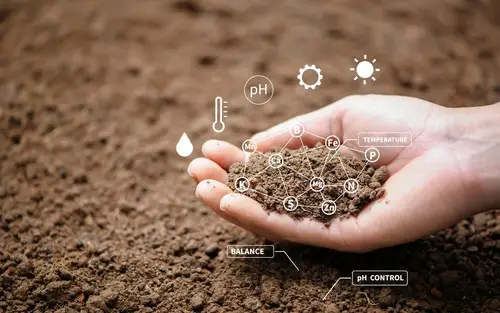
Elephant ear plants require regular fertilization to maintain healthy growth. Use a balanced fertilizer with equal amounts of nitrogen, phosphorus, and potassium, and apply it every two weeks during the growing season.
Additionally, colocasia plants prefer well-draining soil that is rich in organic matter. Use a potting mix that contains peat moss, perlite, and vermiculite to ensure proper drainage.
Frequently Asked Questions
Should I cut off yellow elephant ear leaves?
Yes, you should cut off yellow elephant ear leaves. Yellow leaves are a sign of stress or disease, and they will not recover. Cutting them off will help the plant focus its energy on healthy leaves.
Why are my elephant ears droopy?
Elephant ears can droop for several reasons, including underwatering, overwatering, temperature stress, lack of nutrition, and insufficient light. It’s important to identify the cause of the drooping to address the issue properly.
How do you fix droopy elephant ears?
To fix droopy elephant ears, you should first identify the cause of the drooping. If the plant is underwatered, increase watering frequency. If the plant is overwatered, reduce watering frequency and improve drainage.
If the plant is stressed by temperature or lack of nutrition, move it to a more suitable location and fertilize it. If the plant is not getting enough light, move it to a brighter location.
How do you save a dying elephant ear plant?
To save a dying elephant ear plant, you should first identify the cause of the problem. If the plant is underwatered, increase watering frequency and soak the plant in water for a few hours to rehydrate it. If the plant is overwatered, reduce watering frequency and improve drainage.
If the plant is stressed by temperature or lack of nutrition, move it to a more suitable location and fertilize it. If the plant is not getting enough light, move it to a brighter location.
How do you bring yellow elephant ears back to life?
Yellow elephant ear leaves cannot be brought back to life. However, you can prevent further yellowing by addressing the underlying cause of the problem, such as watering issues, temperature stress, or lack of nutrition.
Why are my indoor elephant ear plant leaves turning yellow?
Indoor elephant ear plant leaves can turn yellow for several reasons, including underwatering, overwatering, improper sunlight, improper soil conditions, lack of nutrition, root damage, and acclimation issues. It’s important to identify the cause of the yellowing to address the issue properly.

Hey, I’m Lisa and I’ve been an avid gardener for over 30 years. I love writing, talking and living in the garden! Feel free to connect with me on my socials below

